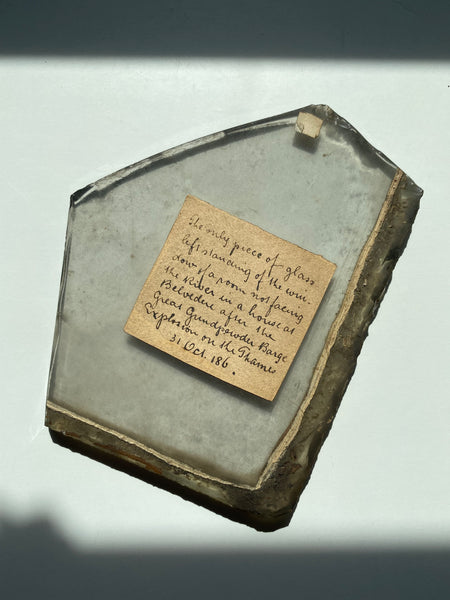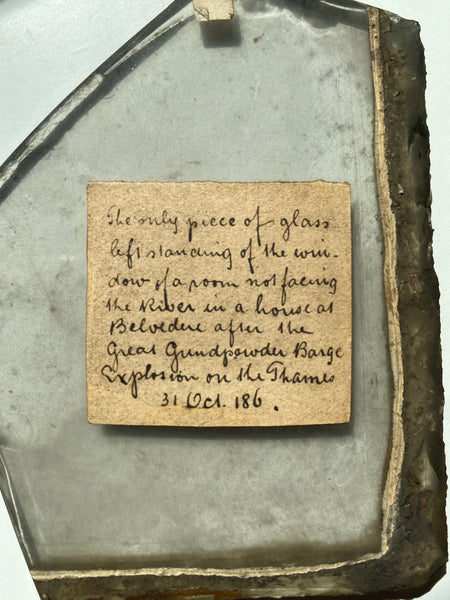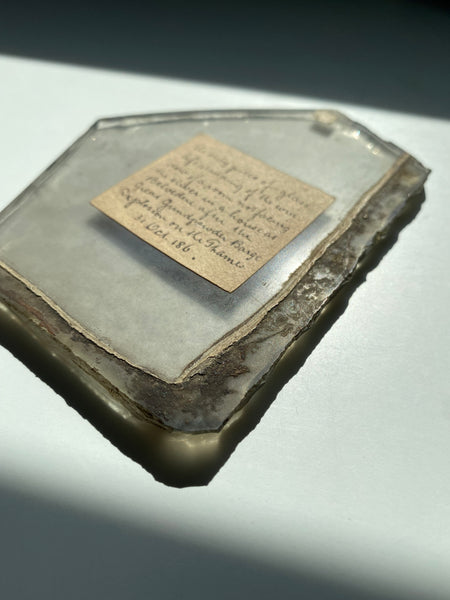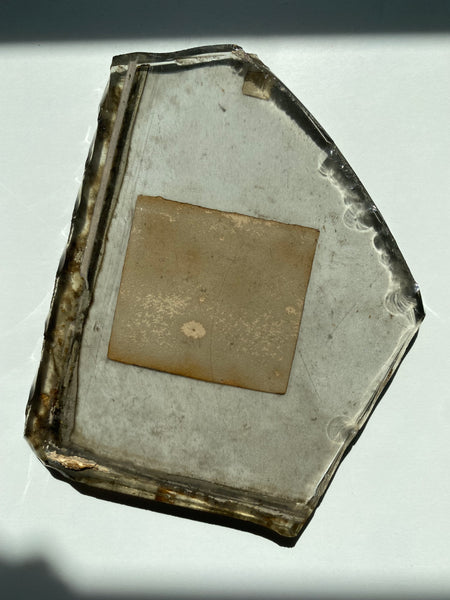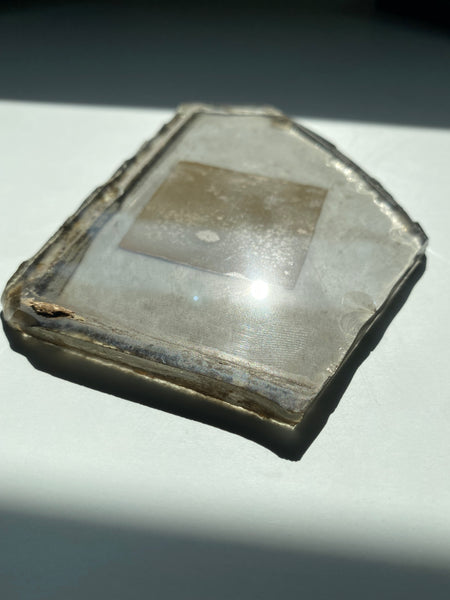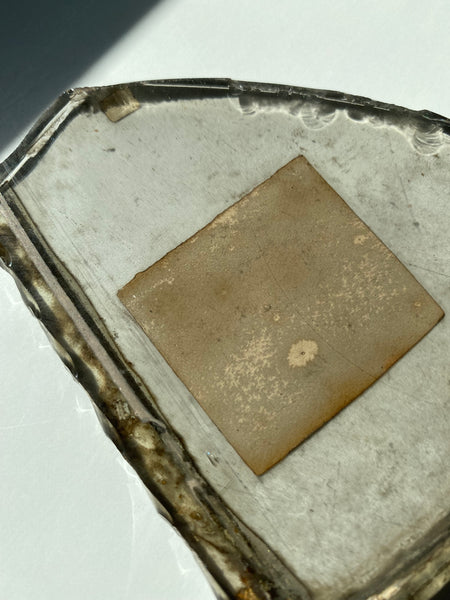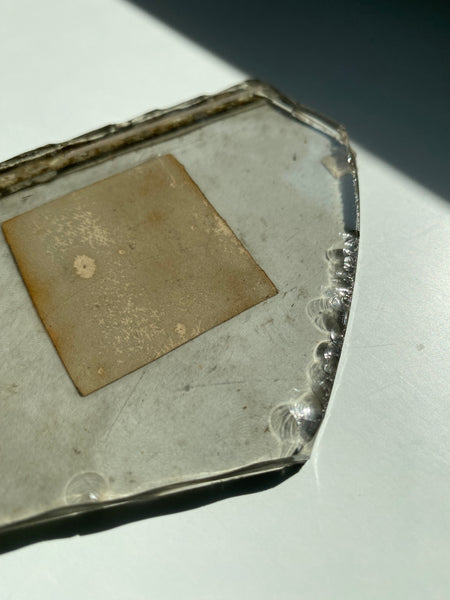Rare Antique 19th Century Glass Memento From One Of The Most Devastating Non-Nuclear Explosions In British History With Period Handwritten Label
- FREE UK SHIPPING WITH ALL ORDERS
- INTERNATIONAL CUSTOMERS PLEASE PROCEED TO CHECKOUT FOR SHIPPING QUOTES
A Rare Antique 19th Century Solitary Glass Fragment With A Period Handwritten Label Which States That It Was Kept As A Memento Of The Erith Explosion That Occurred On 1 October 1864. This Event Remains One Of The Most Devastating Non-Nuclear Explosions In British History.
The label reads “The only piece of glass left standing of the window of a room not facing the River in a house at Belvedere after the Great Gunpowder Barge Explosion on the Thames 31 Oct. 186.”
The label was likely written sometime after the event. Whoever made the label got the date wrong — misremembering it as the end of October instead of the start.
Labels like this were often handwritten by curators, collectors, or family members preserving relics. Inconsistencies in dates or spelling were common, especially before standardized museum practices. Hence the inconsistencies here.
Despite this, the location (Belvedere), event (gunpowder barge explosion), and type of damage (glass shattering) all confirm its link to the Erith Explosion on 1 October 1864.
This catastrophic event took place in the Erith Marshes, between Plumstead and Erith, on the southern bank of the Thames. Two barges carrying gunpowder ignited, triggering a massive explosion that also detonated nearby land-based powder magazines. The blast was so powerful that it was felt up to 100 miles away, causing widespread destruction in the surrounding areas, including Belvedere.
The specific mention of a solitary piece of glass remaining intact in a room not facing the river underscores the immense force of the explosion and its far-reaching impact. Even structures not directly facing the blast bore the brunt of the shockwave, shattering windows and causing significant damage.
This event remains one of the most devastating non-nuclear explosions in British history, highlighting the dangers of transporting and storing large quantities of explosive materials near populated areas.
Attaching explanatory labels directly to artefacts (especially with handwritten notes) was a common practice in the Victorian and Edwardian periods.
The wording style, “The only piece of glass left standing…”, is typical of Victorian sentimental historicism, a style in which relics were often preserved with personal or eyewitness commentary.
This came from a private collection of other curious antique social history mementos.
A rare survivor!
Condition is good, structurally sound.
Measures 10cm x 8cm x 0.5cm
Weighs 105.11 grams










